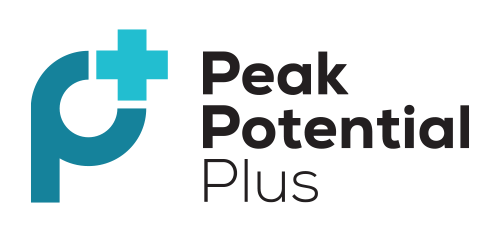Introduction
Nap time, often seen as a luxury or indulgence, holds significant benefits for brain health and longevity. In this article, we delve into the science behind napping and explore how incorporating nap time into your routine can be a potent prescription for optimizing brain function and promoting longevity.
The Science Behind Napping
Napping isn’t merely a period of rest; it’s a crucial physiological process that impacts various aspects of brain function.
Brain Activity During Naps
During naps, the brain undergoes unique patterns of activity, including transitions between different stages of sleep. These transitions play a vital role in consolidating memories, processing information, and rejuvenating neural pathways.
Impact of Napping on Brain Functions
Research suggests that napping can enhance cognitive function, improve memory retention, and reduce stress levels. By allowing the brain to rest and recharge, naps contribute to overall brain health and well-being.
Benefits of Nap Time for Brain Health
The benefits of nap time extend far beyond a temporary boost in energy. Let’s explore some of the ways napping can positively impact brain health.
Improved Cognitive Function
Napping has been shown to enhance cognitive performance, including attention, alertness, and problem-solving skills. By giving the brain a chance to rest and recover, naps help maintain optimal cognitive function throughout the day.
Memory Enhancement
Naps play a crucial role in memory consolidation, helping to solidify new information and improve retention. Whether it’s learning a new skill or studying for an exam, a nap can enhance memory recall and retention.
Stress Reduction
Napping has been linked to reduced levels of stress hormones such as cortisol, promoting relaxation and mental clarity. Taking a nap can provide a much-needed break from the demands of daily life, allowing the brain to unwind and de-stress.
Napping and Longevity
Emerging research suggests that nap time may hold the key to longevity, with regular nappers showing lower rates of mortality.
Studies on Napping and Longevity
Several studies have found associations between regular napping and reduced risk of mortality from various causes, including cardiovascular disease and respiratory illnesses.
Mechanisms Linking Napping to Longevity
The exact mechanisms underlying the link between napping and longevity are still being studied. However, it’s believed that the restorative effects of napping on stress levels, immune function, and cardiovascular health may contribute to a longer and healthier life.
Types of Naps
Not all naps are created equal. Understanding the different types of naps can help you choose the right nap for your needs.
Power Naps
Power naps, typically lasting 10 to 20 minutes, are designed to provide a quick energy boost without entering deeper stages of sleep. They’re ideal for combating midday fatigue and improving alertness.
Recovery Naps
Recovery naps, lasting 30 to 60 minutes, allow for a more extended period of restorative sleep, including a full sleep cycle. They’re beneficial for enhancing memory consolidation and reducing stress.
Prophylactic Naps
Prophylactic naps, taken in anticipation of sleep deprivation, are longer naps taken before a period of extended wakefulness. They help preemptively replenish sleep debt and prevent cognitive decline.
Tips for Effective Napping
To reap the maximum benefits of nap time, it’s essential to nap effectively.
Ideal Nap Duration
The ideal nap duration varies depending on individual sleep needs and goals. Experiment with different nap lengths to find what works best for you, whether it’s a quick power nap or a more extended recovery nap.
Creating a Nap-Conducive Environment
Create a comfortable and quiet environment conducive to sleep. Dim the lights, block out noise, and make sure your nap space is free of distractions to maximize relaxation and minimize sleep disruptions.
Timing Your Naps
The timing of your nap can impact its effectiveness. Aim to nap during the mid-afternoon slump, typically between 1 p.m. and 3 p.m., to take advantage of natural dips in alertness and energy levels.
Overcoming Common Nap Time Challenges
Despite the many benefits of nap time, certain challenges may hinder your ability to nap effectively.
Dealing with Guilt
Some individuals may feel guilty about taking time out of their day to nap. Remember that nap time is a valuable investment in your health and productivity, not a sign of laziness or weakness.
Navigating Work and Napping
Finding time to nap during the workday can be challenging, especially in traditional office settings. Explore alternative napping options, such as nap pods or designated quiet areas, to incorporate nap time into your work routine discreetly.
Addressing Sleep Inertia
Sleep inertia, the groggy feeling experienced upon waking from a nap, can be minimized by keeping nap durations short and allowing yourself time to fully wake up before resuming activities.
Napping in Different Cultures
Napping practices vary across cultures, with some societies embracing naps as an integral part of daily life.
Cultural Attitudes Towards Napping
In cultures such as Spain and Greece, afternoon siestas are a long-standing tradition, providing an opportunity for rest and relaxation during the hottest part of the day.
Traditional Napping Practices
In other cultures, such as Japan, napping is encouraged as a means of promoting productivity and mental well-being. Companies may even provide designated nap rooms for employees to use during breaks.
Nap Time and Productivity
Contrary to popular belief, napping can actually enhance productivity and creativity in the workplace.
Enhancing Work Performance with Naps
Research suggests that short naps can improve workplace performance by enhancing cognitive function, boosting alertness, and reducing errors and accidents.
Boosting Creativity Through Napping
Naps have been shown to enhance creative problem-solving skills by facilitating associative thinking and divergent thought processes. Taking a nap can help unlock new insights and innovative ideas.
Conclusion
In conclusion, nap time is far more than just a brief period of rest; it’s a powerful prescription for brain health and longevity. By understanding the science behind napping, harnessing its benefits, and overcoming common challenges, individuals can unlock the full potential of nap time to optimize brain function, enhance productivity, and promote overall well-being. Whether you’re looking to boost your memory, reduce stress, or improve longevity, incorporating nap time into your daily routine may be the key to unlocking a healthier, happier, and more productive life.




















